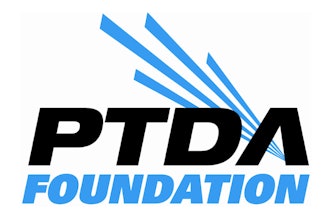
As inflation ran rampant over the past few years, the annual ID Salary Report has revealed a strange theme: despite many distributors handing out pay raises, a good deal of workers aren’t exactly smiling.
In our recent Survey of Distributor Operations, we reported that 46% of surveyed distributors said they are not typically able to find available and qualified job applicants. Moreover, 38% said turnover at their organizations was higher this year than the year prior, which, lest we forget, was an era so chaotic it was dubbed “The Great Resignation.”
With inflation remaining a stubborn variable, and the workforce scenario still in flux, distributors are left struggling to cough up the cash to retain top workers. In this year’s Salary Report, we aim to identify whether their strategies are working, and what employees really think about their compensation plans.
The 2023 ID Salary Report is based on a survey distributed via email and conducted throughout the month of June. The results are divided into three categories based on how respondents classified their specific job functions.
The following results are based on separate sets of data from Executives (Owner, Chairman, CEO, CFO, CIO, COO, President or VP); Mid-Level (non-sales) Management (Product, Operations, Branch and/or Purchasing); and Sales Representative/Manager. This year’s split of respondents came in at 33% executives, 32% mid-level management and 35% sales rep or sales management. Overall, 81% of respondents were male, and the pool’s age breakdown was split at 12% under 40 years old; 21% at 41-50; 32% between 51-60; and 34% above age 60.
Executives
The executive-level group of respondents tend to be the most uniform demographically, and this year was no exception: 88% of those who responded to our survey from this role described themselves as male, and three-quarters are age 51 or older, with 51% in the 60+ age range — the largest of any age group.
Additionally:
78% of executive-level titles have a college or advanced degree.
Geographically, they are spread out across the United States with the most operating in the Midwest (36%) and Northeast (24%).
This group has worked for their respective companies for an average of just over two decades, with some reporting as much as 42 years of tenure.
The survey respondents at the executive level serve in supervisory roles, with nearly a third saying they supervised 20 or more employees. In contrast, 42% directly oversee fewer than 10. Only 3% do not have this current responsibility.
The executives included in this analysis tend to represent companies that are on the small or medium business size. Twelve percent come from companies with $100 million or more in annual sales with just 3% representing those earning $500 million and above. The bulk of these respondents come from companies within the $25-$100 million range (45%) and $25 million or less (42%).
So with these smaller companies, does there come a smaller salary? Not necessarily.
As expected, the executive group is the highest paid of the three surveyed groups, and while salaries vary, the average base wage was reported at $167,000 — a result that falls within the standard range we’ve seen the past few years. The 2021 average was $152,000 and the 2022 average was $179,000.
This year, the amount they received in added compensation – including commissions, retirement funding, profit sharing and bonuses – comes in at $131,000, ticking up the average variable pay from the $101,000 reported in 2022. Taken together, the overall compensation package of $298,000 beats last year’s cumulative total of $280,000 annually.
What’s interesting here is that pay has gone up, but not substantially when compared to pre-pandemic levels. For example, we saw many executives take a hit on pay during 2020 and 2021 as their companies battled the insidious variables of shutdowns and supply chain challenges. So while this year’s sum significantly bests the pay packages in the pandemic years (which ranged, on average, between $249,000 and $266,000), wages have increased only incrementally compared to pre-pandemic years (2017 and 2018), where wages were in the $280,000-$290,000 range.
This begs the question: despite their large pay packages, do executives in distribution feel well compensated? The good news is 88% of them say they do. And while increases in their jobs’ demands were evident for 79% of respondents, it came with a pay bump for 59% of them.
For those who received a pay bump, it was characterized as follows:
A cost of living increase based on inflation (48%)
A standard merit-based pay raise (30%)
A sizable merit-based pay raise (13%)
Seventeen percent added that they were provided more incentive-based opportunities for cash awards or bonuses, and 9% said they’d received stronger benefits packages.
Executives also predominantly believe the companies they serve offer compelling pay and benefits in order to recruit top talent. This question shows a dramatic shift over that which was reported in recent years: this year, 94% say their company is competitive, compared to 75% who said the same last year, and 58% who agreed in 2021.
Overall, they also take a positive tone on the future — a reassuring sign from the industry’s top brass. No respondents reported taking any recent pay or benefits cuts and 88% say they don’t have concerns they will experience cuts in the next 12 months.
Our executive-level respondents also shared the following comments on whether they believe their compensation to be fair as it relates to their job responsibilities:
“As I grow the business, my bonus plan rewards me.”
“As President/Owner, I can set my compensation based on company performance.”
“I think I am underpaid.”
“Comparable positions currently start at more $$.”
Mid-Level (Non-Sales) Management
Mid-level managers in this year’s report represent a variety of company sizes, offering more of a vantage point from $500+ million distributors (37%). Nearly a third also hail from companies with $100-$500 million in revenue, while 33% came from those under $10 million. One in five of our survey respondents in middle management are employed by companies with less than $25 million in annual revenue.
In our most gender-diverse category, 63% of respondents identify as being male, the lowest percentage of all three groups. Incidentally, this group is also diverse in its age range, especially compared to the executive-level respondents. Age demographics are split in a way that indicates a depth of bench in these distribution companies:
Age 60+: 17%
51-60: 43%
41-50: 30%
Under 40: 10%
The mid-level management group is nearly as well-educated as their executive counterparts, with 70% boasting a college degree or advanced degree. Also in lockstep with their superiors, the survey respondents in this group are generally attesting to a pay bump.
The average base wage for the mid-level management group this year is $104,000 — a steady increase compared to last year ($94,000) and the year prior ($88,000). Also increasing is the additional compensation that these individuals have received in the way of bonuses and other variable pay, coming in around $25,000 for an overall pay package of $129,000.
Additionally:
The average tenure for an employee in this category who responded to our survey is 13 years with their company. They have held their current position for an average of seven years.
Supervising other team members is not the primary role for many. A full one-third said they don’t oversee any other workers within the company and, of those who do, 37% say it’s five or fewer.
Forty percent represent companies in the Midwest; 17% are in the South and 13% have headquarters outside the U.S.
This year’s mid-level managers, by and large, received a pay bump in the past 12 months, with two-thirds asserting that was the case. By a wide margin, the increases they received were primarily characterized as a “standard, merit-based pay raise.” Nearly 10% described their increase as “sizable.”
No respondents in this group said they’d taken a compensation or benefits cut in the past 12 months, though that precedent isn’t enough to assure them all that one isn’t coming: 10% cite “concern” that they could face these cuts in the coming year, and 17% say they’re unsure if they might face a pay cut.
Despite the general wage increases, the mid-level management group is by far the most unhappy with their compensation. A whopping 63% believe they are not fairly compensated — a figure that basically inverts last year’s results in this category, when roughly the same number expressed satisfaction with their compensation.
This dissatisfaction even extends to their companies’ abilities, overall, to recruit top talent: another 63% say their companies aren’t competitive enough on wages.
So what’s going on here? Part of the unhappiness could be a reflection of the pressures of rising costs. More than half of respondents in this group describe the cost of living in their area as “higher than average,” with only one in 10 believing they live in an area with lower-than-average cost of living. Mid-level managers also expressed the following:
“For the amount of work I do, and I am the only one that knows some of the jobs I do, I feel it should be more.”
“Cost of living has increased considerably.”
“Workload has doubled.”
With workforce issues squeezing distribution companies, do the mid-level managers absorb the blow? Many seem to think so, with one adding, “I manage employees from 3 different departments that should have supervisors.” Added another: “My role was originally handled by 3 people.” To add a finer point, 80% of survey respondents in this category told us that their work responsibilities had increased over the past year.
Sales/Sales Management
The segment of this survey that identifies as sales or sales management predominantly serves in outside sales capacities (70%), with 25% characterizing their role within their organization as “inside sales.” This segment is the most male-dominated of all surveyed segments, with 89% male and 11% female respondents falling within this category.
Additionally:
The distribution sales professionals in this group comprise a diverse range of ages, with a third in the 60+ category, 31% between 51-60 and 22% aged 41-50. Just 14% are under 40.
56% say they have a college degree and another 6% boast an advanced degree.
64% don’t supervise other employees, and if they do, the numbers are generally low; 17% oversee five or fewer workers.
Company size is varied, with a third of these workers hailing from distributors with $500M+ in annual sales and, on the other end, 31% from companies earning $25 million or less.
One key difference between this year’s results and last year’s is that far fewer sales professionals completed our survey last year. With more data in play this year, we’ve seen a sizable increase in the number of employees who rely heavily on base salary and derive less compensation from variable pay.
For example, last year’s average base salary came in around $85,000, with variable pay around $30,000, for a total pay package of $115,000, on average. This year’s average base salary was higher, at a reported $105,000, but the variable came in at an average of $23,000. Overall, the cumulative package suggests sales professionals are raking in about $128,000, an increase of about 10%.
About half of sales professionals in our survey say they received a pay increase in the past 12 months, which compares to 72% who said the same last year. They were described by 74% as a standard, merit-based pay increase. An additional 21% say they received a cost of living increase. Uniquely, this was the only job category where some respondents said their pay actually decreased over last year, with nearly 9% attesting to that circumstance.
With that in mind, this group is also the least assured that they will be able to maintain the compensation packages they’ve worked so hard to attain: nearly one in five believe they may see a pay or benefits cut in the coming year, and another 11% say they’re unsure.
Sixty percent of sales and sales management professionals believe the demands of their job have increased in the past year, and while sometimes that means more compensation for commissioned reps, not everyone feels their sales targets are a motivator.
Respondents said the following about the role of their commission opportunities:
18% say they are consistent and comprise a large portion of earnings.
42% say they are inconsistent and comprise a small portion of earnings.
12% say the goals are attainable and motivating, while another 12% said the opposite: that the goals are unattainable and a source of stress.
While the sales group is more satisfied than those in middle management, their perception of “fairness” as it relates to their compensation is still low by historical standards. Last year and the year prior, 53% said they felt they were fairly compensated. This year, that figure drops to 44%.
The reasoning is a familiar refrain, as evidenced by the following comments from the sales group:
“Additional roles and responsibilities are added to my title, with no additional compensation.”
“Sales grew by 30% but total compensation remained about the same.”
“Performing tasks outside my job description.”
“In order to be successful, it is necessary to do much more than is within the job description.”
Analysis
Last year, we spoke of the “moving target” that companies were facing when assessing how well-compensated their workers were, and that appears to remain the case. Despite successive years of increases for some job categories, many distribution industry employees do not feel that their compensation plans reflect the value they bring to their organizations.
As distributors reflect on the changing landscape, where recruitment has taken on a more cohesive approach that involves intangible benefits like flexibility and empowerment, it’s important to remember that the paycheck is still an intensely critical piece. And until prices go down (if they ever do), employees are faced with doing the same work – or, in many cases, more – for money that doesn’t stretch as far as it once did. For distributors who can afford it, this could mean several consecutive years of compensation adjustments to right the ship. Unfortunately, they must assess which they can afford: paying their employees more, or losing talent to the competition.























